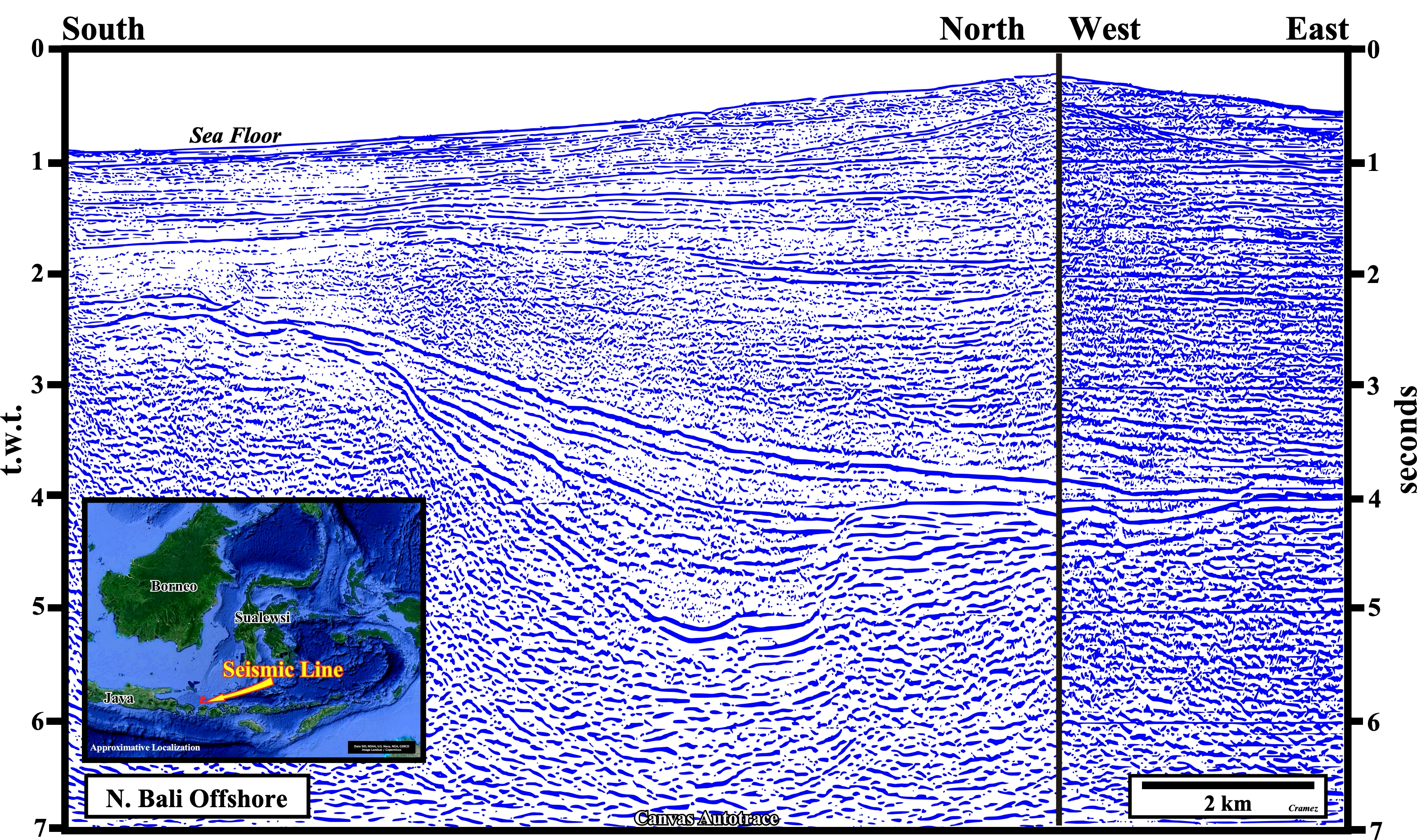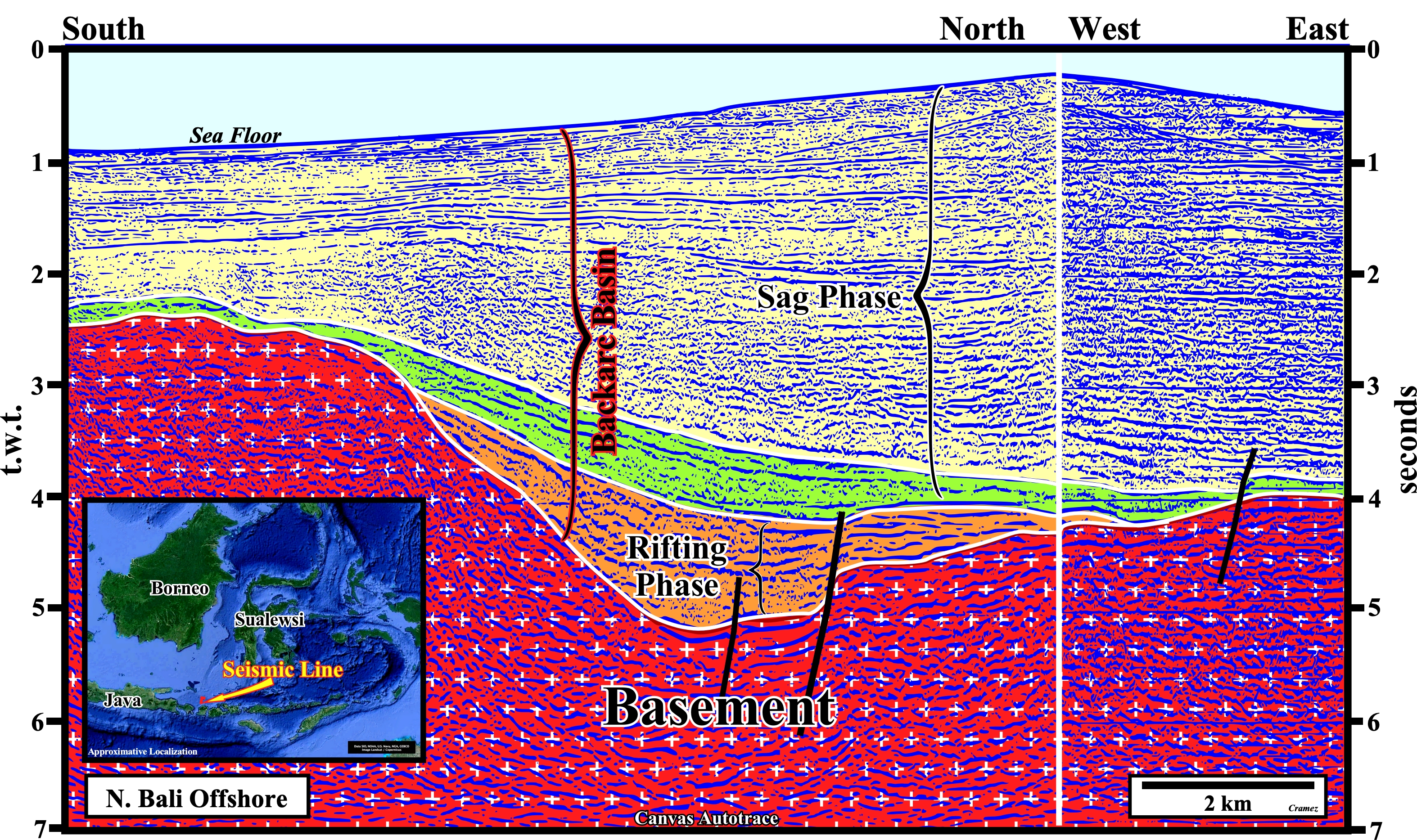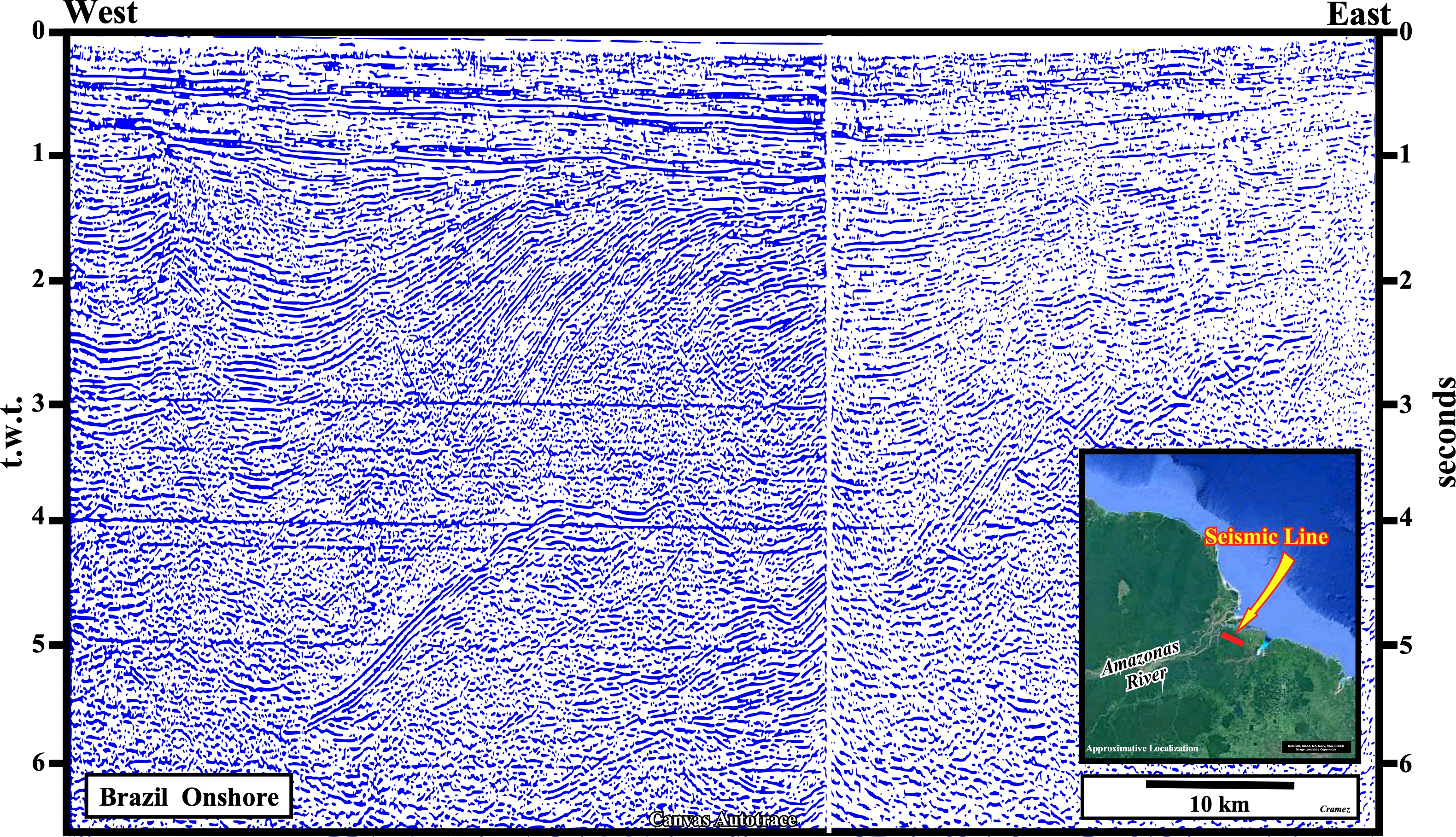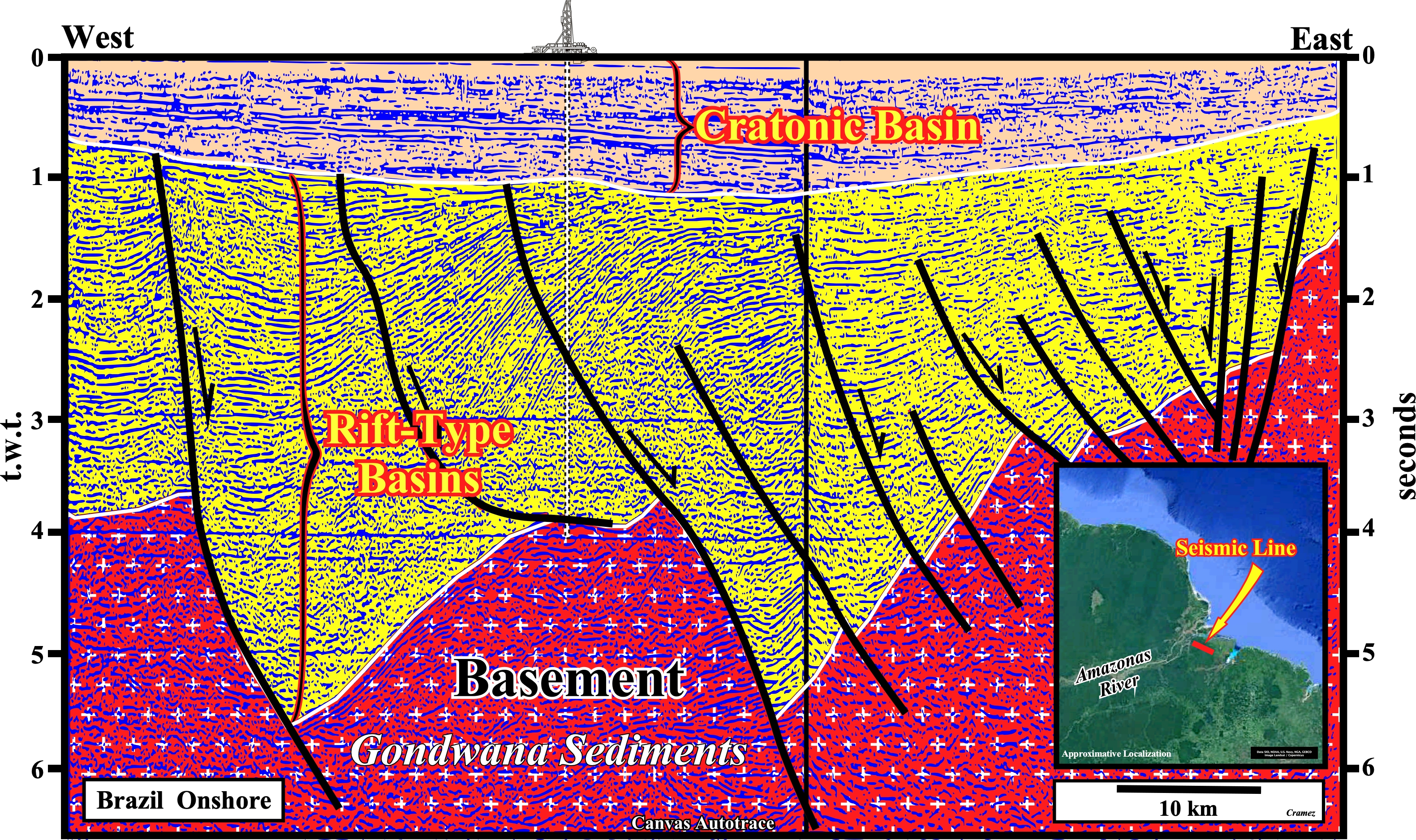

Potential Source-Rocks
Backarc Basins without Oceanization


If there is a generating petroleum sub-system in this offshore, which corresponds to stacking of a backarc basin over a Mesozoic basement, the more likely, it is associated with the organic rich sediments deposited in the grabens or half-grabens during the rifting phase. Generally, the organic matter of the sediments of the sag or thermal phase, even in a slightly inverted backarc basin, is immature due to the an insufficient burial. The internal configuration of the sediments of the rifting phase can suggest the presence or the absence of lacustrine potential source-rocks. A parallel internal configuration is more coherent with a lacustrine environment, i.e., with a non marine water depth, than an divergent internal configuration, which characterizes a sedimentary environment with a water depth, more or less, zero. In other words, the probability of find lacustrine source-rocks in a half-graben with parallel internal configuration, is higher than in a half-graben with a divergent internal configuration (see next plate).


The tentative geological interpretation illustrates here above, is a reproduction of a tentative interpretation I did in 1988 to rejected a farm-out proposition of Texaco, in Marajo Graben (Brazil). Such a farm-out rejection was based in empirical hypothesis that my regret friend Albert Bally told me: (i) A rift-type basin with a divergent internal configuration is, generally, full of reservoir-rocks (the terrigeneous influx balances the extension) ; (ii) A rift-type basin with a parallel internal configuration, generally, develops lacustrine source-rocks (the terrigeneous influx does not balance the extension, i.e., there is formation of a lake (no marine water depth). A glance to the above autotrace is, largely, sufficient to recognize the divergent internal configuration of the rift-type basin and to conclude that the chances of the presence of generating petroleum sub-systems is quite small. My super-boss follow me and he rejected the farm-out proposition. However (second message: do not confuse speculative reserves with proven reserves), two-three months later, my super-boss irrupted my office and asked me: +are you aware of the Petrobras press release announcing more than 50 G bls oil discovery in Marajo Island". Wait a moment, I said, I'm calling my friend Kasumi Miura (Manager Exploration of Petrobras) to test the information. The answer of my friend to my questions was: "The well is dry, more than 75% of sands and no potential source-rocks were found in the well, but Carlos as you probably know, next month there is the Presidential election, and looks than Petrobras Management wants, again, the victory J. Sarney, so they announce speculative reserves and not proven reserves. " Proved reserves are quantified estimates of hydrocarbons (crude oil, natural bitumen, natural gas, natural gas liquids), that the geological and engineering analysis of a number of data has demonstrated with a certain degree of certainty that they can, from a certain date, be recovered, commercially, from reservoir-rocks known by methods profitable under present economic conditions. The expression "with a certain degree of certainty" implies that the probability of recovering the quantity, estimated as proved, is at least 90%. Speculative reserves that are not highlighted by exploration wells, but by certain geological and seismic data suggesting the presence of the main petroleum parameters (trap, source-rock, rock-reservoir, maturation and retention) in the area.
Send E-mails to carlos.cramez@bluewin.ch with comments and suggestions to improve this atlas.
Copyright © 2001 CCramez
Last update:
2022